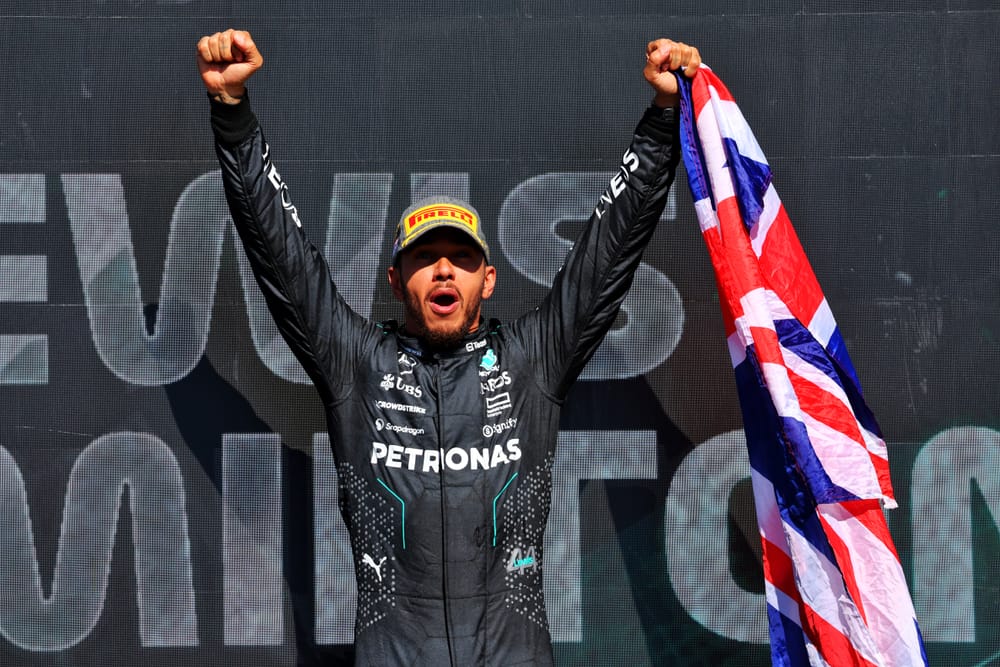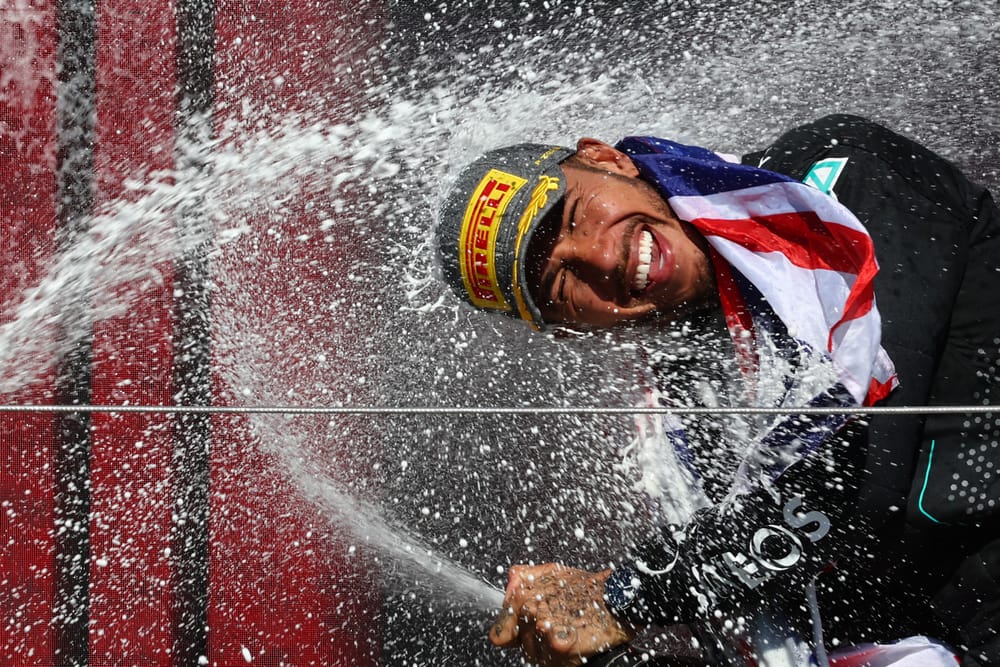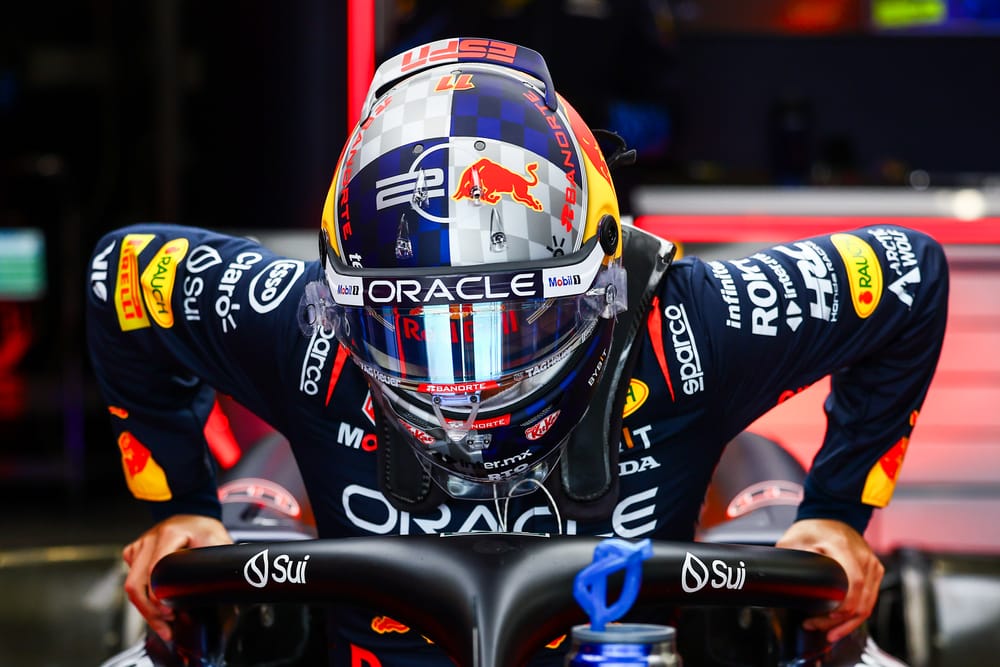

A great Lewis Hamilton drive of control, pace and nerve. He was faster in the wet than Mercedes team-mate George Russell, putting the overtake on him, staying calm as the softer McLarens came at him and passed, then capitalised upon McLaren’s two strategic blunders, and finally fended off a charging Max Verstappen whose Red Bull was on a more robust hard tyre at the end.
But really, if McLaren had made all the right calls this would almost certainly have been a 1-2 for the papaya cars.
But how fairytale that Hamilton’s bounce back from oblivion should be so ostentatiously timed. As Toto Wolff said, what a way to sign off their joint history at the British Grand Prix. With his ninth home victory at 39 years old, 16 years after his first.
It was a brilliant, vivid race with the classic intervention of the weather to test everyone’s mettle in both the cockpit and on the pitwall. Alternately, bright sunshine and sudden rain, the race began on a dry track with a moody cloud on its way.
A wet phase from around laps 17-21 wasn’t wet enough for inters and so was about surviving on the slicks and having the compliance and grip of the big-winged McLarens. This was the phase where Hamilton passed polesitter and initial leader Russell and where both were overtaken in turn by the flying Lando Norris and Oscar Piastri.
Further back, there were a few intermediate gambles - notably Charles Leclerc’s Ferrari and Sergio Perez’s pitlane-starting Red Bull - but that finished off their prospects as the track remained relatively dry.
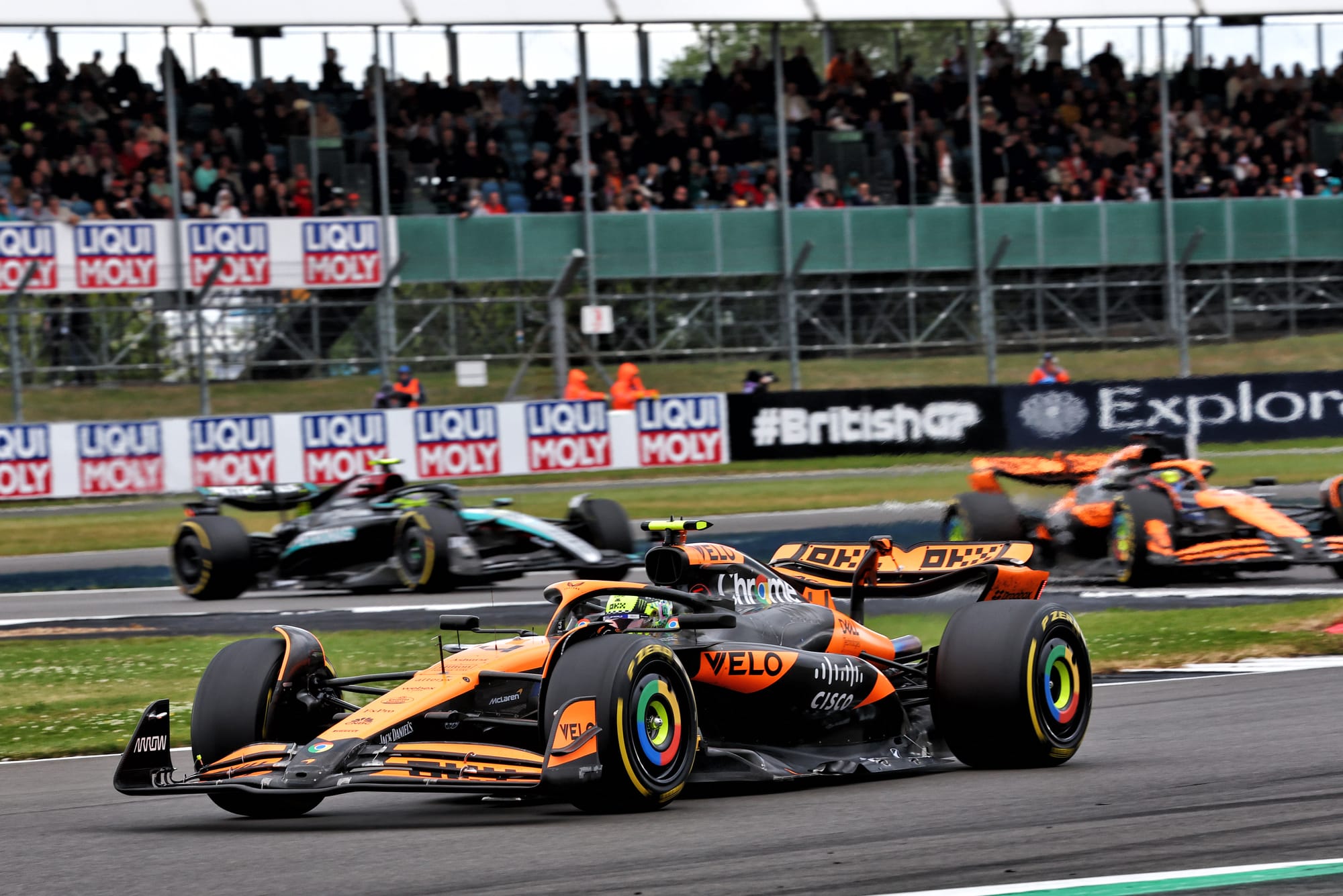
The Mercedes had run off track onto the apron road at Abbey and as they rejoined were bundled from first and second down to third and fourth! With Norris now leading from Piastri. “When we went off and the McLarens came by, I couldn't believe it,” said Hamilton. “I couldn't understand how they were able to generate so much heat still in their tyres or maybe it's the aero or whatever.”
Between laps 21-24 the track had dried, the sun had burst through. But another black cloud was on the way, a bigger one. In this dry phase, with everyone up front still on their original medium tyres, Norris and Piastri (both of whom had passed Max Verstappen into Stowe in the early laps) maintained a small gap over the Mercedes, with all of them pulling away from Verstappen’s Red Bull which was opening out its front-left tyre earlier than the others. It was even briefly under threat from Carlos Sainz’s Ferrari.
As the big cloud brought out the umbrellas, so it was time to finally be rid of the mediums in exchange for intermediates. But on which lap exactly to stop? Initially it was still dry on parts of the track, but very wet from Chapel, through Stowe and Vale and onto the pit straight. So it would be easy to burn out the inters if they were fitted prematurely. Alternately, it would be easy to lose whole chunks of time by pitting a lap too late with your worn slicks on a wet track.
In these moments of uncertainty, Red Bull, Verstappen and his engineer Gianpiero Lambiase were the gold standard, as so often before. They called it perfectly - on lap 26. Norris, Hamilton and Russell were in on the next lap, Mercedes stacking Russell and losing him around 8s and a place to Verstappen.
Had they pitted Hamilton on lap 26 and Russell on 27, the time loss for Russell would have been marginal. But McLaren called it even worse in that it decided against stacking Piastri. Staying out that extra lap after Norris and the Mercs dropped him from second to sixth, behind Sainz (who’d stopped on the same lap as Verstappen).
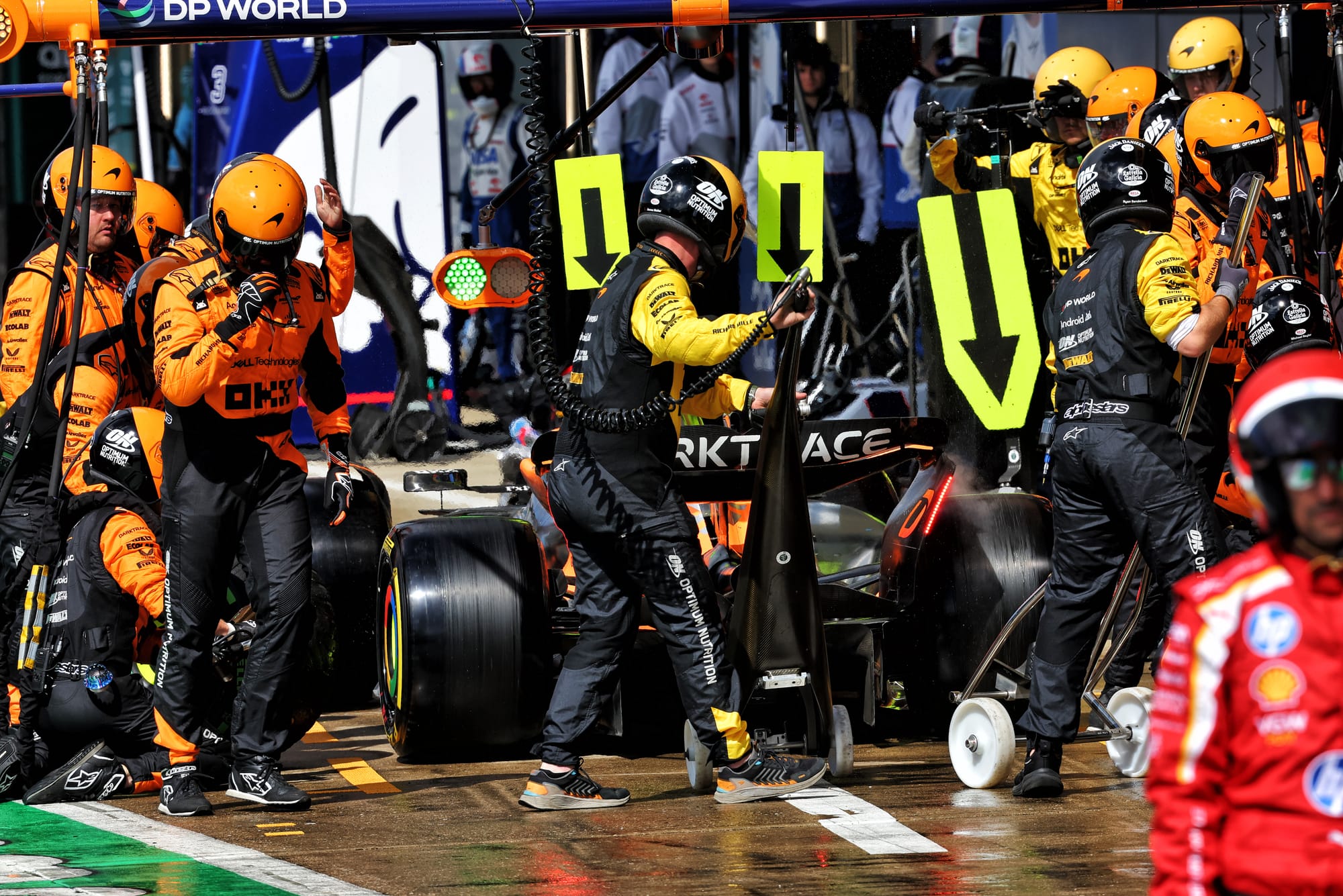
Norris still led the race - from Hamilton, Verstappen and Russell. The latter had to retire a few laps later as the water pressure was dropping alarmingly, signalling imminent power unit failure.
Seven laps into the inters stint as the worst of the rain had passed and the track was beginning to dry, Hamilton was able to pick up the pace more than Norris and what had been a gap of over 3s quickly came down so that the Mercedes was within undercut range as decision time loomed again about the tyre choice. Which compound and on which lap?
Here’s where McLaren’s second strategic error was made. Easy to say in hindsight, but at the time Hamilton and, particularly, Verstappen were much clearer and unambiguous in their communication with ‘Bono’ and ‘GP’ respectively than was Norris with Will Joseph.
With 14 laps to go, Mercedes brought in Hamilton for the undercut on Norris. Verstappen (running around 6.5s behind Hamilton) also came in. Hamilton was fitted with softs, Verstappen with hards. The medium was the best race tyre - but neither had any new ones. By contrast, McLaren had saved a set each for Norris and Piastri. Piastri pitted on the same lap as Hamilton and Verstappen and was fitted with his.
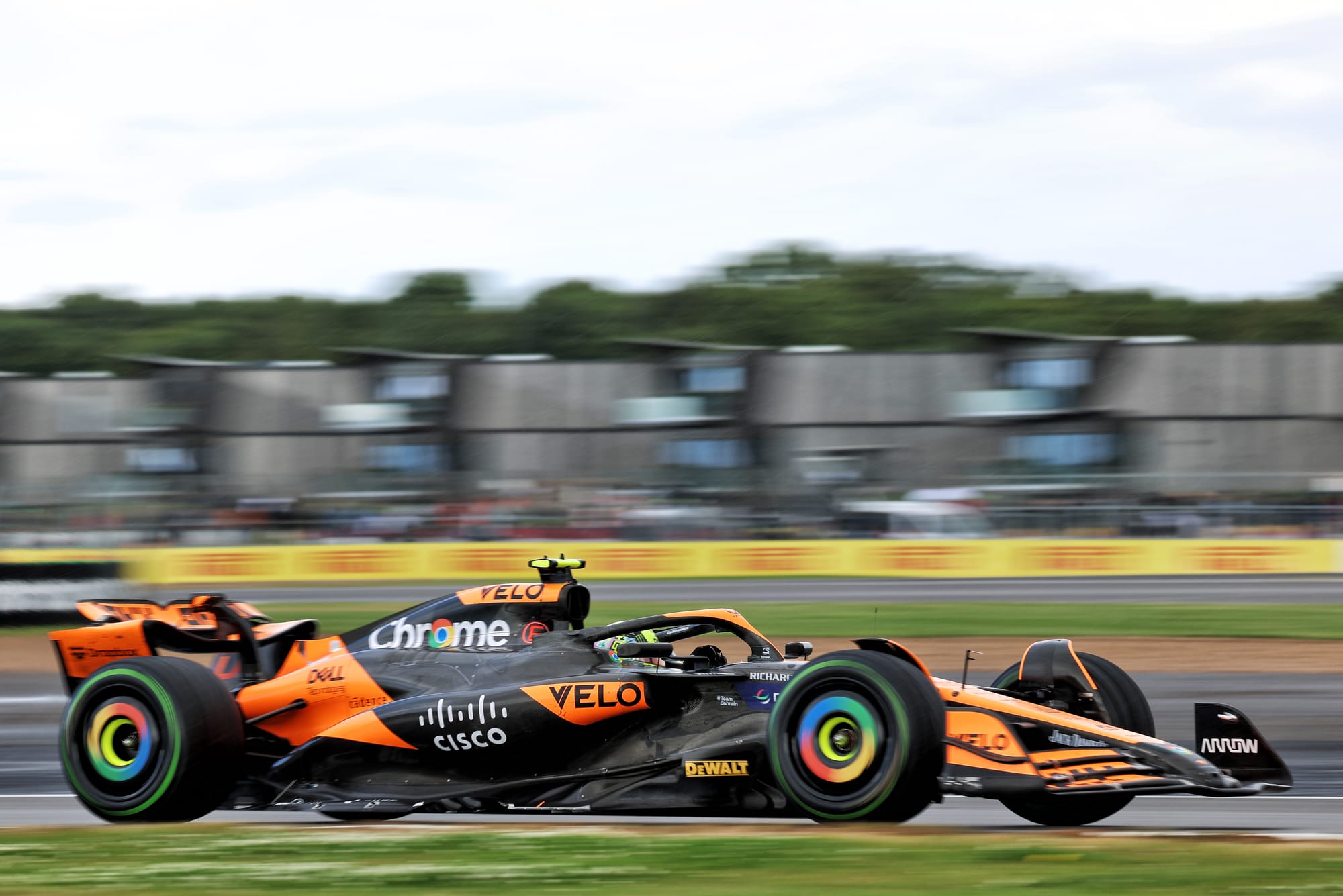
The indecision between Norris and Joseph left him out for another lap and further uncertainty followed about tyre choice. Did Lando want to cover Verstappen by fitting their mediums? Or cover Hamilton by fitting softs? “Hamilton,” replied Norris. He then backed off on it. But the softs were fitted - and Norris rejoined down to second having lost time at the pitstop to Ferrari coming out and then locking up as he came in at an awkward angle.
He’d lost the lead and was now on the wrong tyres, with a set of perfectly good fresh mediums still sitting in the garage.
This set in place the tense closing stages as Hamilton pulled away from Norris while Verstappen used his hards to relentlessly close down on both, returning the early-race compliment in passing Norris with the aid of DRS into Stowe.
Norris had quickly run out of grip on the softs but Hamilton judged how to bring them in perfectly. Verstappen pressed on, the fastest car on track but only because of his tyre advantage. He was closing fast, but not fast enough to deny Hamilton. His ninth British Grand Prix victory, his first race win since 2021.
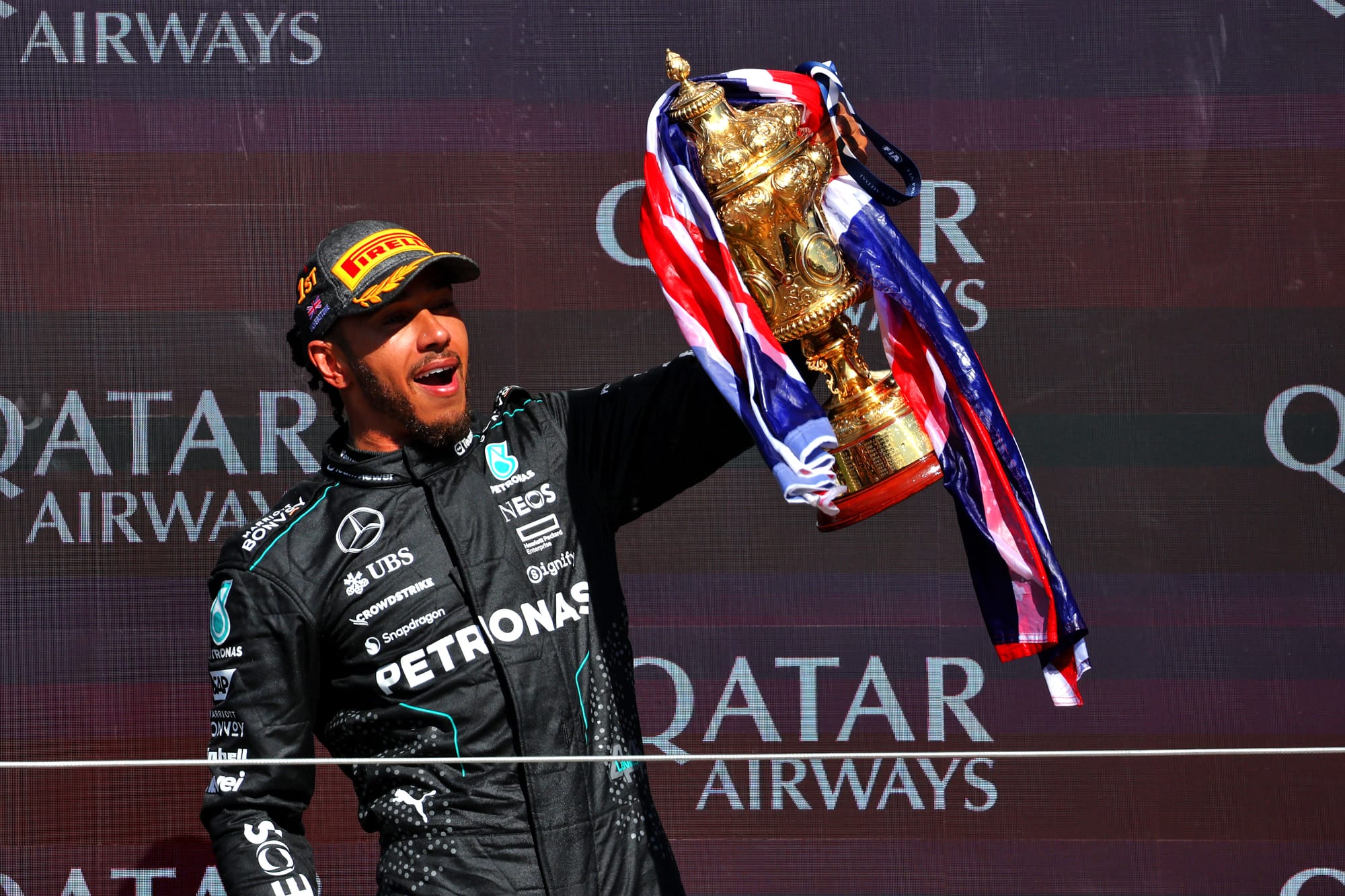
“Yeah, I can't stop crying,” he said. “Since 2021, I’m just every day getting up, trying to fight, to train, to put my mind to the task and work as hard as I can with this amazing team and this is my last race here with this team… There's definitely been days between 2021 and here where I didn't feel like I was good enough or whether I was going to get back to where I am today.”
Piastri on his mediums was fourth, having made up 10s on Norris on his softs in the 12 laps after they stopped. It rather suggested that with both cars on the right tyres and without Piastri’s delay from the extra lap at the first stop (which lost him 18s immediately and a further 4s stuck at Sainz’s pace), McLaren could have finished 1-2.
Norris was taking much of the responsibility but it wasn’t solely down to him. “I blame myself today for not making some of the right decisions,” he said. “I hate it. I hate ending in this position and forever having excuses for not doing a good enough job.”
Team boss Andrea Stella was more reasoned in his assessment. “We were asking Lando because we thought it might be tricky going onto the [medium] in the conditions but in fairness, it wasn't that tricky because Verstappen on a hard compound managed the transition to the dry tyres without big issues.
"So I think we should have taken the responsibility to say the medium is the right tyre, we go for it. I think in checking with Lando we kind of self-doubted and this led us to follow this direction.”
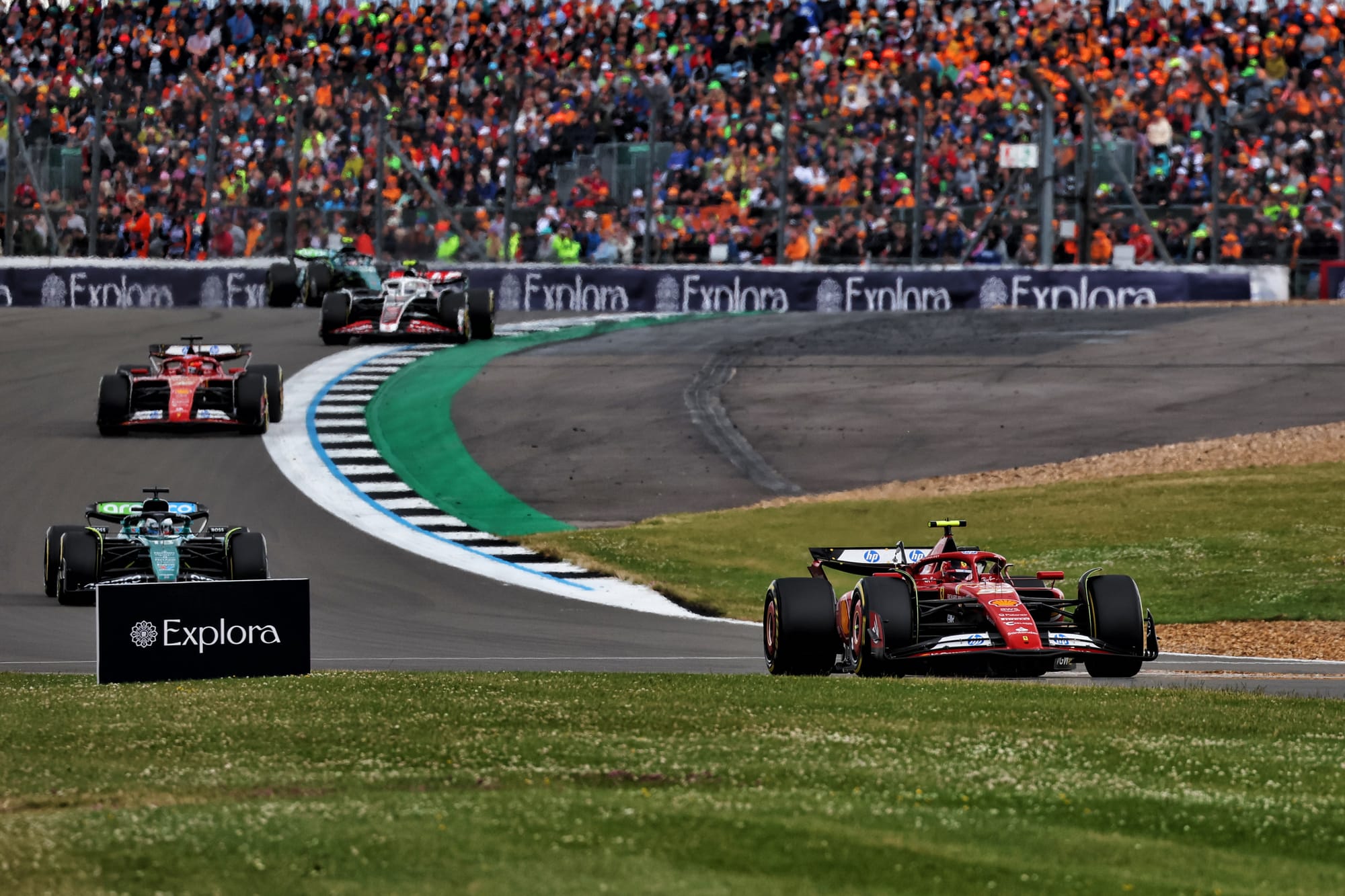
Sainz gave the difficult Ferrari about what it deserved with fifth place, at least a long way clear of the Ferrari customer Haas of Nico Hulkenberg, which had outqualified both Ferraris.
Not so far behind Hulkenberg were the Aston Martins of Lance Stroll and Fernando Alonso, while Alex Albon’s Williams deprived Yuki Tsunoda’s RB of ninth a few laps from the end.
